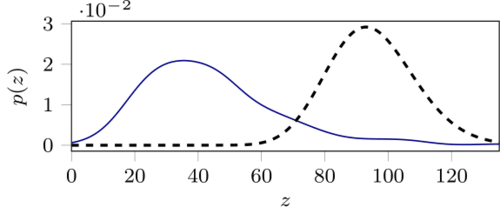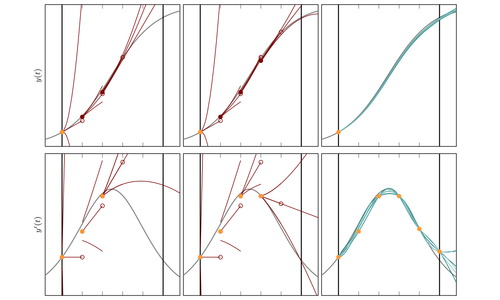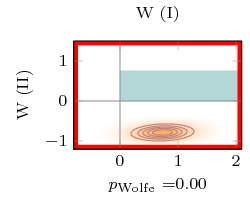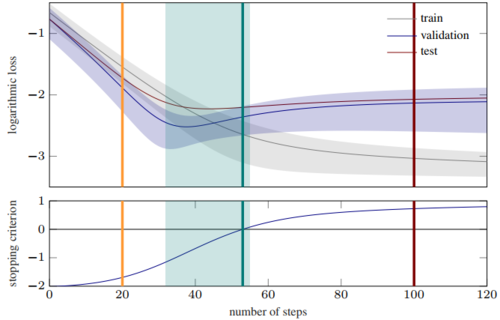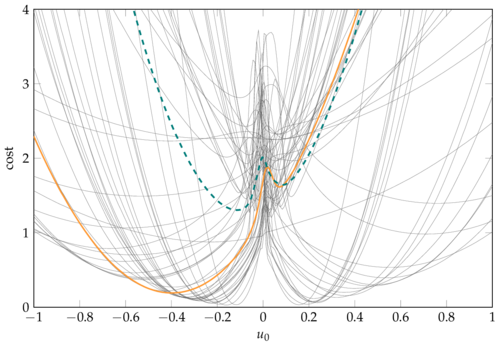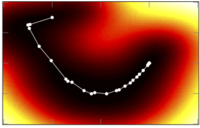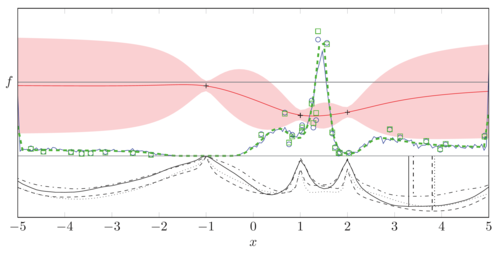2021
Marco, A., Baumann, D., Khadiv, M., Hennig, P., Righetti, L., Trimpe, S.
Robot Learning with Crash Constraints
IEEE Robotics and Automation Letters, 6(2):1439-1446, IEEE, February 2021 (article)
2020
Stockinger, G., Janka, H., Kresse, D., Melson, T., Ertl, T., Gabler, M., Gessner, A., Wongwathanarat, A., Tolstov, A., Leung, S., Nomoto, K., Heger, A.
Three-dimensional models of core-collapse supernovae from low-mass progenitors with implications for Crab
Monthly Notices of the Royal Astronomical Society , 496(2):2039-2084, August 2020 (article)
Kanagawa, M., Sriperumbudur, B. K., Fukumizu, K.
Convergence Analysis of Deterministic Kernel-Based Quadrature Rules in Misspecified Settings
Foundations of Computational Mathematics, 20, pages: 155-1944, February 2020 (article)
Kersting, H., Sullivan, T. J., Hennig, P.
Convergence rates of Gaussian ODE filters
Statistics and Computing, 30(6):1791-1816, 2020 (article)
Wahl, N., Hennig, P., Wieser, H., Bangert, M.
Analytical probabilistic modeling of dose-volume histograms
Medical Physics, 47(10):5260-5273, 2020 (article)
2019
Tronarp, F., Kersting, H., Särkkä, S., Hennig, P.
Probabilistic Solutions To Ordinary Differential Equations As Non-Linear Bayesian Filtering: A New Perspective
Statistics and Computing, 29(6):1297-1315, 2019 (article)
Karvonen, T., Kanagawa, M., Särkä, S.
On the positivity and magnitudes of Bayesian quadrature weights
Statistics and Computing, 29, pages: 1317-1333, 2019 (article)
Tronarp, F., Kersting, H., Särkkä, S. H. P.
Probabilistic solutions to ordinary differential equations as nonlinear Bayesian filtering: a new perspective
Statistics and Computing, 29(6):1297-1315, 2019 (article)
Motta, A., Berning, M., Boergens, K. M., Staffler, B., Beining, M., Loomba, S., Hennig, P., Wissler, H., Helmstaedter, M.
Dense connectomic reconstruction in layer 4 of the somatosensory cortex
Science, 366(6469):eaay3134, 2019 (article)
Bartels, S., Cockayne, J., Ipsen, I., Hennig, P.
Probabilistic Linear Solvers: A Unifying View
Statistics and Computing, 29(6):1249-1263, 2019 (article)
2018
Kersting, H., Sullivan, T. J., Hennig, P.
Convergence Rates of Gaussian ODE Filters
arXiv preprint 2018, arXiv:1807.09737 [math.NA], July 2018 (article)
Kanagawa, M., Hennig, P., Sejdinovic, D., Sriperumbudur, B. K.
Gaussian Processes and Kernel Methods: A Review on Connections and Equivalences
Arxiv e-prints, arXiv:1805.08845v1 [stat.ML], 2018 (article)
Muandet, K., Kanagawa, M., Saengkyongam, S., Marukata, S.
Counterfactual Mean Embedding: A Kernel Method for Nonparametric Causal Inference
Arxiv e-prints, arXiv:1805.08845v1 [stat.ML], 2018 (article)
Nishiyama, Y., Kanagawa, M., Gretton, A., Fukumizu, K.
Model-based Kernel Sum Rule: Kernel Bayesian Inference with Probabilistic Models
Arxiv e-prints, arXiv:1409.5178v2 [stat.ML], 2018 (article)
Schober, M., Särkkä, S., Hennig, P.
A probabilistic model for the numerical solution of initial value problems
Statistics and Computing, 29(1):99–122, 2018 (article)
Wahl, N., Hennig, P., Wieser, H., Bangert, M.
Analytical incorporation of fractionation effects in probabilistic treatment planning for intensity-modulated proton therapy
Medical Physics, 45(4):1317-1328, 2018 (article)
2017
Mahsereci, M., Hennig, P.
Probabilistic Line Searches for Stochastic Optimization
Journal of Machine Learning Research, 18(119):1-59, November 2017 (article)
Mahsereci, M., Balles, L., Lassner, C., Hennig, P.
Early Stopping Without a Validation Set
arXiv preprint arXiv:1703.09580, 2017 (article)
Roos, F. D., Hennig, P.
Krylov Subspace Recycling for Fast Iterative Least-Squares in Machine Learning
arXiv preprint arXiv:1706.00241, 2017 (article)
Klein, A., Falkner, S., Bartels, S., Hennig, P., Hutter, F.
Fast Bayesian hyperparameter optimization on large datasets
Electronic Journal of Statistics, 11, 2017 (article)
Gretton, A., Hennig, P., Rasmussen, C., Schölkopf, B.
New Directions for Learning with Kernels and Gaussian Processes (Dagstuhl Seminar 16481)
Dagstuhl Reports, 6(11):142-167, 2017 (article)
Wahl, N., Hennig, P., Wieser, H. P., Bangert, M.
Efficiency of analytical and sampling-based uncertainty propagation in intensity-modulated proton therapy
Physics in Medicine & Biology, 62(14):5790-5807, 2017 (article)
Wieser, H., Hennig, P., Wahl, N., Bangert, M.
Analytical probabilistic modeling of RBE-weighted dose for ion therapy
Physics in Medicine and Biology (PMB), 62(23):8959-8982, 2017 (article)
2016
Klenske, E. D., Zeilinger, M., Schölkopf, B., Hennig, P.
Gaussian Process-Based Predictive Control for Periodic Error Correction
IEEE Transactions on Control Systems Technology , 24(1):110-121, 2016 (article)
Klenske, E. D., Hennig, P.
Dual Control for Approximate Bayesian Reinforcement Learning
Journal of Machine Learning Research, 17(127):1-30, 2016 (article)
2015
Hennig, P.
Probabilistic Interpretation of Linear Solvers
SIAM Journal on Optimization, 25(1):234-260, 2015 (article)
Hennig, P., Osborne, M. A., Girolami, M.
Probabilistic numerics and uncertainty in computations
Proceedings of the Royal Society of London A: Mathematical, Physical and Engineering Sciences, 471(2179), 2015 (article)
2013
Hennig, P., Kiefel, M.
Quasi-Newton Methods: A New Direction
Journal of Machine Learning Research, 14(1):843-865, March 2013 (article)
Bangert, M., Hennig, P., Oelfke, U.
Analytical probabilistic modeling for radiation therapy treatment planning
Physics in Medicine and Biology, 58(16):5401-5419, 2013 (article)
2012
Hennig, P., Schuler, C.
Entropy Search for Information-Efficient Global Optimization
Journal of Machine Learning Research, 13, pages: 1809-1837, -, June 2012 (article)
2007
Hennig, P., Denk, W.
Point-spread functions for backscattered imaging in the scanning electron microscope
Journal of Applied Physics , 102(12):1-8, December 2007 (article)



